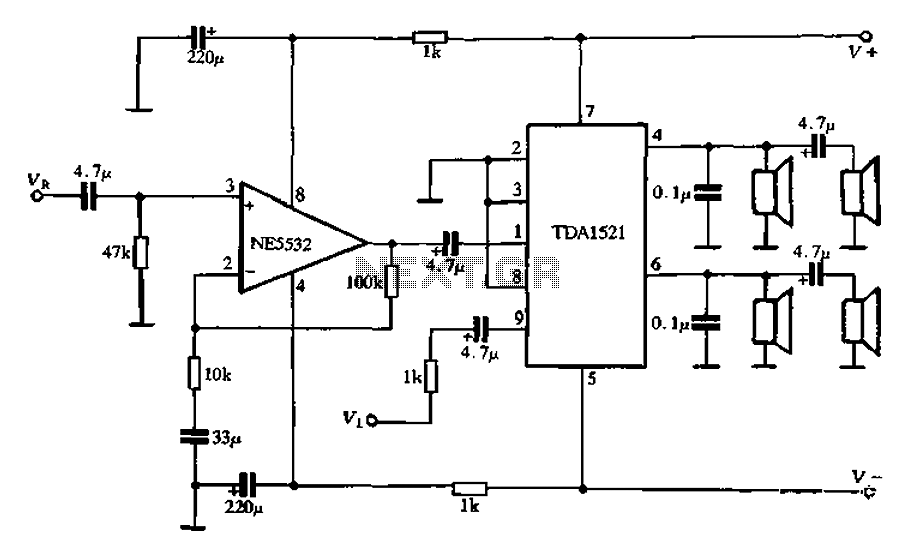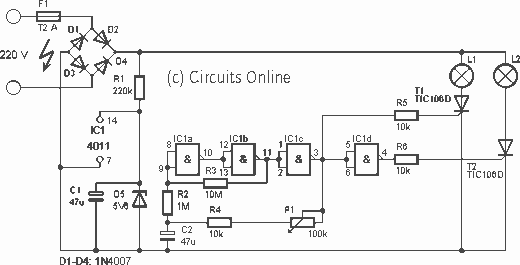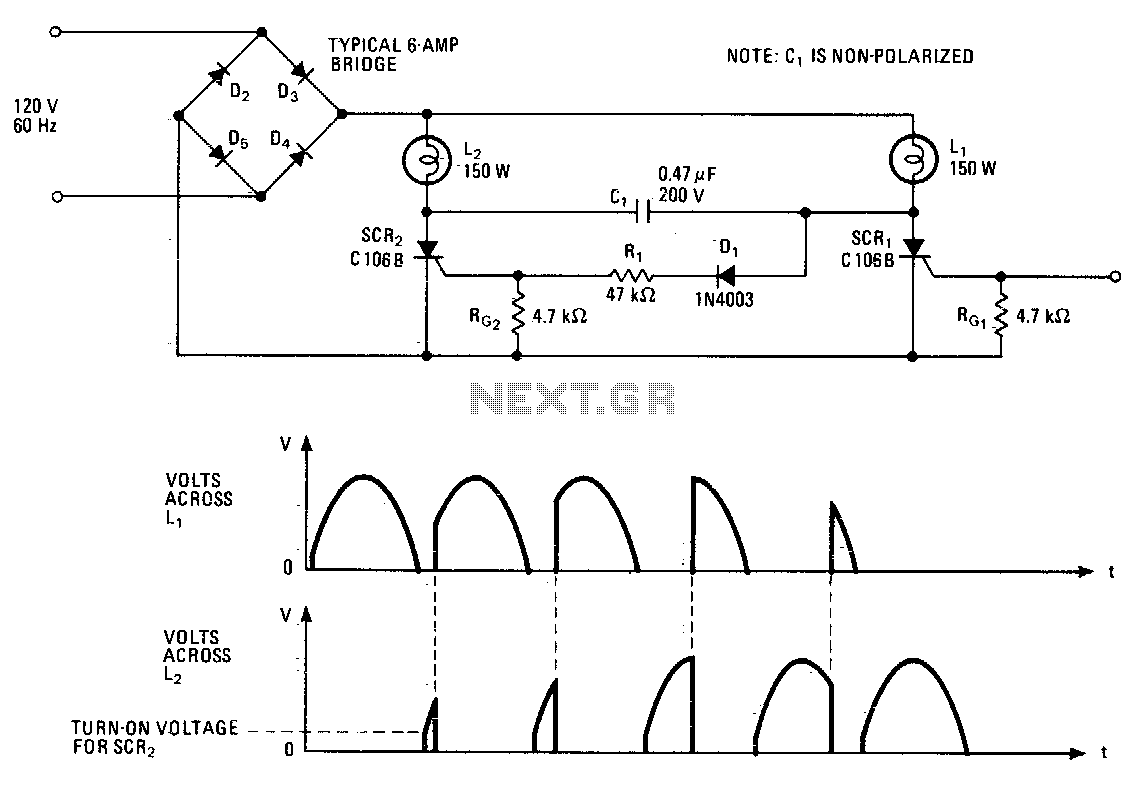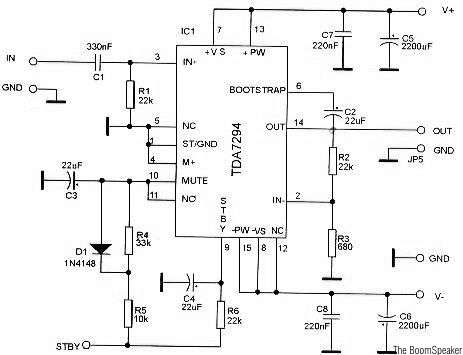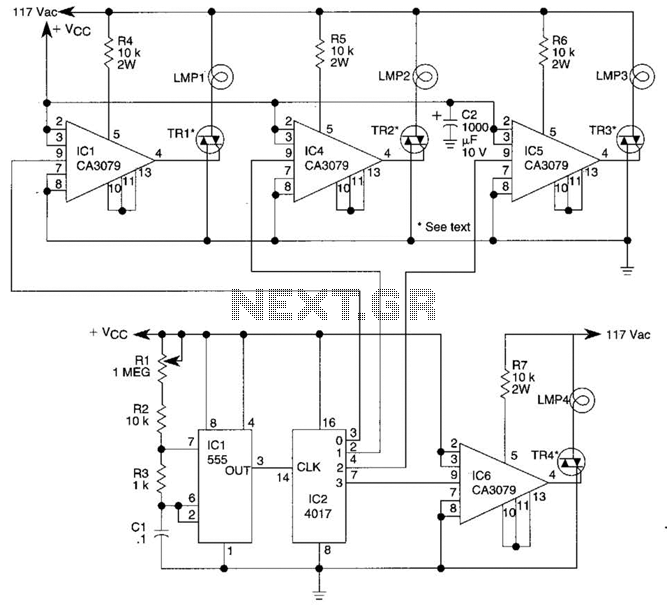
Salt bath resistance furnace temperature control circuit
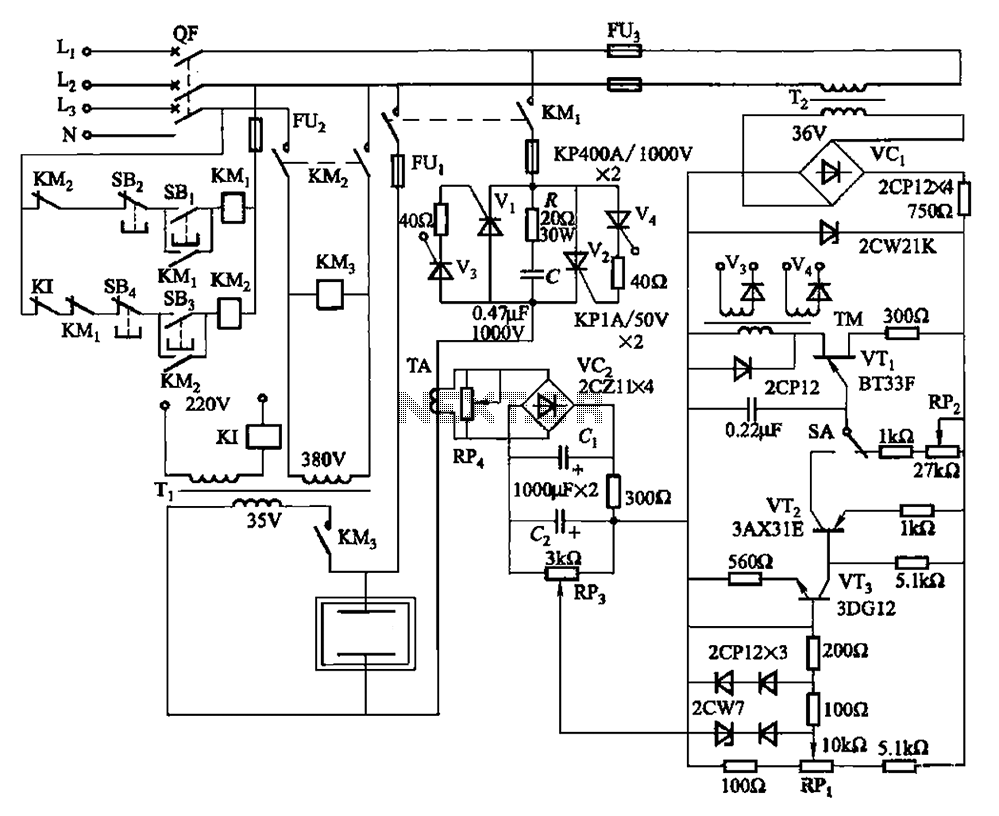
80 kW resistance salt bath furnace control circuit. The salt bath resistance furnace is a high-power device that employs fast start and temperature control technology to significantly save energy. The circuit includes a single-junction transistor (VTi) used as a relaxation oscillator, a manual adjustment potentiometer (RPz), an automatic time adjustment potentiometer (RPi), and thyristors (V3, V4) whose conduction angles can be modified, which in turn alters the conduction angles of Vi and Vz.
The 80 kW resistance salt bath furnace control circuit is designed to efficiently manage the heating process of a salt bath furnace, which is commonly utilized in industrial applications for heat treatment processes. The circuit architecture is centered around a relaxation oscillator, implemented using a single-junction transistor (VTi). This oscillator generates a pulsed output that controls the firing of the thyristors (V3 and V4).
The manual adjustment potentiometer (RPz) allows for user-defined settings, enabling operators to tailor the circuit's response to specific operational requirements. This is particularly useful in varying thermal conditions or when different types of materials are processed in the furnace. The automatic time adjustment potentiometer (RPi) complements this by providing an automated means to fine-tune the timing of the heating cycles, enhancing the furnace's efficiency and responsiveness.
Thyristors V3 and V4 play a crucial role in controlling the power delivered to the heating elements of the furnace. By adjusting the conduction angles of these thyristors, it is possible to modulate the effective power output and, consequently, the temperature of the salt bath. This modulation is critical for achieving precise temperature control, which is essential for the quality of the heat treatment.
In summary, the control circuit integrates advanced features such as manual and automatic adjustments, along with robust power management through thyristor control, making it a sophisticated solution for energy-efficient operation of high-power salt bath resistance furnaces.80kW resistance to salt bath furnace controlled circuit. Salt bath resistance furnace is a big power device, the circuit using fast start, temperature-controlled technology, ca n greatly save energy. From single-junction transistor VTi etc. relaxation oscillator, adjust the potentiometer RPz manual, automatic time adjustment potentiometer RPi, can be changed thyristor V3, V4 conduction angle, that change Vi, vz conduction angle.
The 80 kW resistance salt bath furnace control circuit is designed to efficiently manage the heating process of a salt bath furnace, which is commonly utilized in industrial applications for heat treatment processes. The circuit architecture is centered around a relaxation oscillator, implemented using a single-junction transistor (VTi). This oscillator generates a pulsed output that controls the firing of the thyristors (V3 and V4).
The manual adjustment potentiometer (RPz) allows for user-defined settings, enabling operators to tailor the circuit's response to specific operational requirements. This is particularly useful in varying thermal conditions or when different types of materials are processed in the furnace. The automatic time adjustment potentiometer (RPi) complements this by providing an automated means to fine-tune the timing of the heating cycles, enhancing the furnace's efficiency and responsiveness.
Thyristors V3 and V4 play a crucial role in controlling the power delivered to the heating elements of the furnace. By adjusting the conduction angles of these thyristors, it is possible to modulate the effective power output and, consequently, the temperature of the salt bath. This modulation is critical for achieving precise temperature control, which is essential for the quality of the heat treatment.
In summary, the control circuit integrates advanced features such as manual and automatic adjustments, along with robust power management through thyristor control, making it a sophisticated solution for energy-efficient operation of high-power salt bath resistance furnaces.80kW resistance to salt bath furnace controlled circuit. Salt bath resistance furnace is a big power device, the circuit using fast start, temperature-controlled technology, ca n greatly save energy. From single-junction transistor VTi etc. relaxation oscillator, adjust the potentiometer RPz manual, automatic time adjustment potentiometer RPi, can be changed thyristor V3, V4 conduction angle, that change Vi, vz conduction angle.

